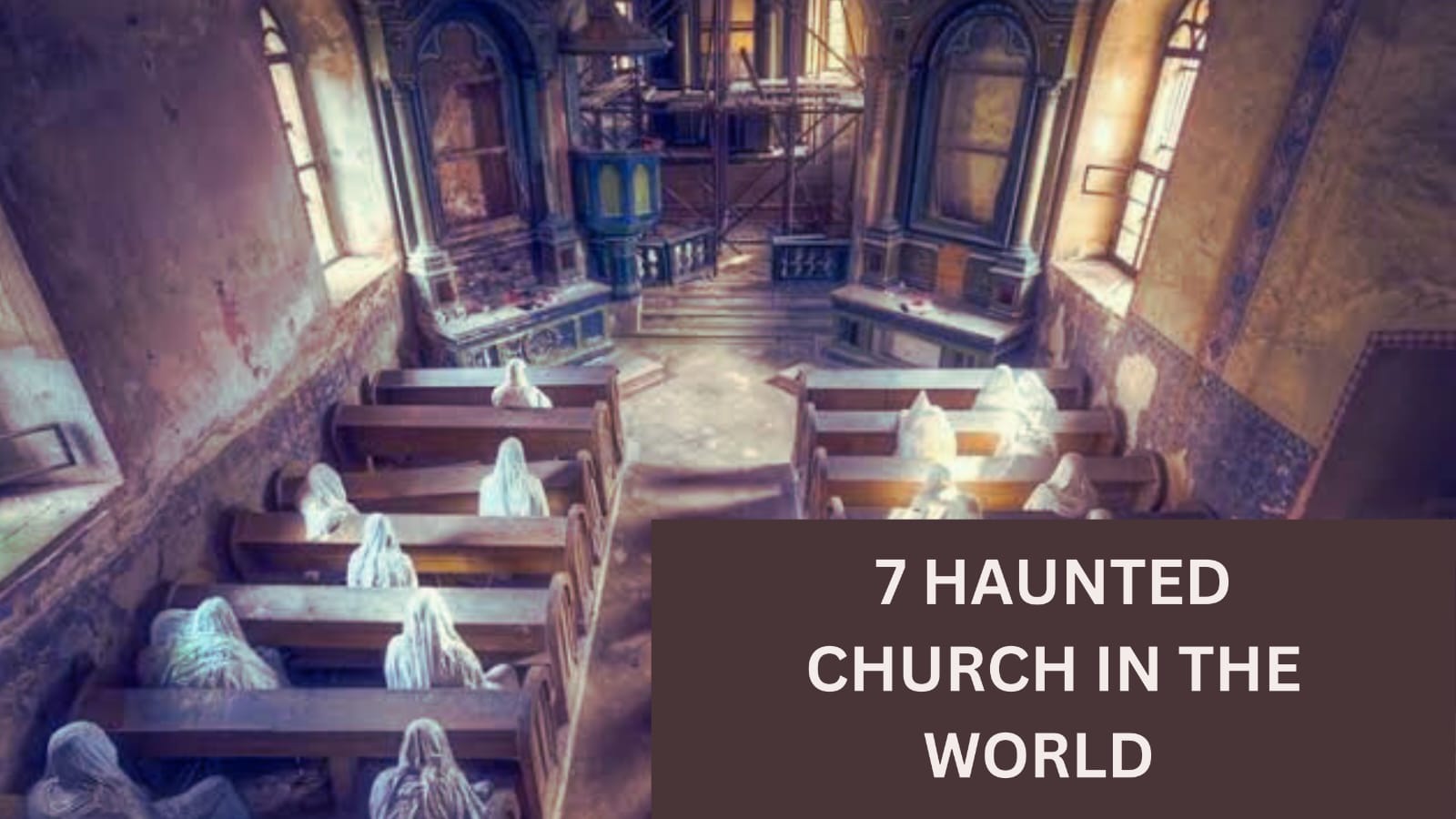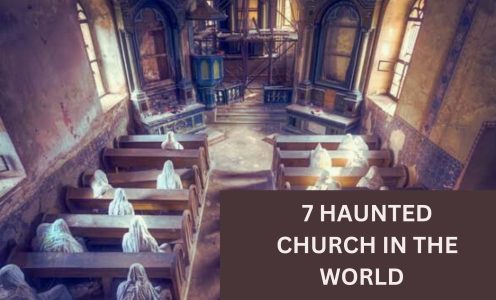7 HAUNTED CHURCH IN THE WORLD
George’s Church, Czech Republic
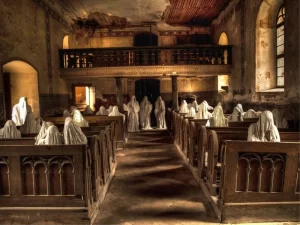
Originally built in 1352, St. George’s Church (about 125 miles east of Prague) boasts quite a history. The building was nearly destroyed by fires many times over the centuries, and its roof partially collapsed during a funeral service in 1968. After that event, the congregation became convinced the church was haunted and refused to enter; as a result, the building was stripped by robbers and fell prey to vandalism.
That all changed in 2012 when an art student at the University of West Bohemia had an idea to lure visitors back to the haunted church: a collection of 30 ghost sculptures sitting in the pews with their heads bowed. Today, tourists have flocked to the “Ghost Church” (which opens to the public every Saturday afternoon) to snap photos and even sit among the unmoving specters while praying.
Eastern State Penitentiary
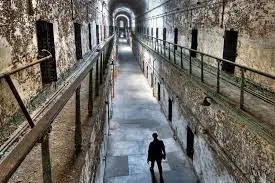
The castle-like Eastern State Penitentiary took solitary confinement to new levels when it was built in 1829. Prisoners lived alone, exercised alone, and ate alone; when an inmate left his cell, a guard would cover his head with a hood so he couldn’t see or be seen. The prison had to abandon its solitary system due to overcrowding in 1913, although the forms of punishment did not get any less severe (chaining an inmate’s tongue to his wrists is one example) before it closed for good in 1970.
The site now welcomes thousands of visitors every year, both for its museum and Reported paranormal happenings have included disembodied laughter, shadowy figures, and pacing footsteps.
Al Madam, United Arab Emirates

There is something eerily beautiful, Al Madam is no exception. Located in about 40 miles southeast of Dubai, the village was most likely built in the 1970s and deserted shortly after—a fact that local legend attributes to djinn (shape-shifting spirits) scaring people straight out of town in haunted church.
No one knows whether or not the spirits have lingered, but Al Madam still has a sort of haunted church quality to it: dunes encroaching on the two rows of houses and a mosque, sand falling through broken windows like waves, and a seemingly endless sea of ochre desert stretching out in every direction.
Bonaventure Cemetery, Savannah

It is pretty much one giant ghost story, with mysterious stories shrouding everything from public parks to breweries. But few city spots evoke quite as much reverence as Bonaventure Cemetery, overflowing with moody Spanish moss and time-worn Victorian monuments. There are many notable figures buried here, like singer Johnny Mercer and poet Conrad Aiken, but it’s the grave of Gracie Watson that dark tourists should find in that haunted church.
Having died at just six years old, her grave is marked by a life-size marble statue with her hand resting on a tree stump, symbolizing her life cut short. Many visitors place toys at her grave, and some have reported seeing the ghost of Gracie near the site. Other spooky accounts of the cemetery include inexplicable sounds, like crying babies and barking dogs.
Castle of Good Hope, South Africa
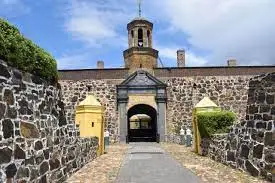
A sprawling building near the shoreline of Table Bay in Cape Town, the Castle of Good Hope dates back to 1666, making it the oldest colonial building in South Africa. Originally built by the Dutch East India Company as a replenishment station for ships, the site also served as a military fortress and prison during the Second Boer War from 1899 to 1902.
Today, you can tour the fort’s many rooms and buildings (including the gruesome torture chamber), but you might want to prepare yourself for a ghost sighting.
La Recoleta Cemetery, Buenos Aires
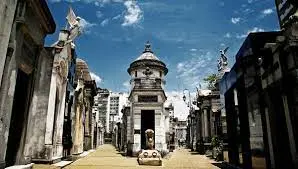
You don’t have to be religious to be moved by which features thousands of statues, fairytale grottoes, and intricate tombstones, as well as the remains of Argentina’s most iconic figure—Eva Perón. The stone walkways and labyrinth of mausoleums are as beautiful as they are eerie, and Recoleta has a couple of haunted legends of its own.
One of the most famous stories involves David Alleno, a former grave-digger, and caretaker who worked at the cemetery for 30 years before killing himself.
Lawang Sewu, Indonesia
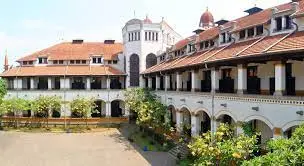
Constructed in the early 20th century by Dutch colonialists, Lawang Sewu (or “Thousand Doors”) served as the head office for the Dutch East Indian Railway Company before the Japanese turned it into a detention camp during WWII. During the war, many harsh interrogations, tortures, and violent executions occurred within the building’s walls—all of which contribute to its current status as one of Indonesia’s most haunted landmarks, says the country’s Ministry Of Tourism.
FOR MORE SUCH ARTICLES VISIT OUR BLOG CATEGORY – UNLOCK FEAR

